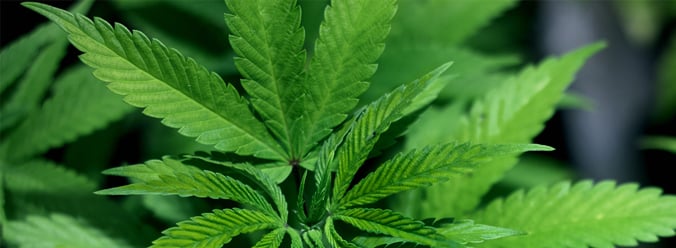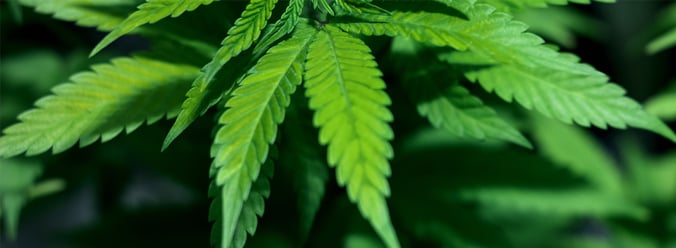Zinc Deficiency - A Nutrient Shortage In Your Cannabis Plant
Published :
Sep 14, 2017
Categories :
Cannabis cultivation

Nutrient deficiencies can cause an array of issues that growers must recognise before it's too late. If you're wondering if your cannabis plant has a zinc deficiency, read below to learn the signs, treatments, and prevention tactics of this deficiency.
Like humans, plants can miss certain nutrients for different reasons. When it comes to cannabis, this becomes crucial as quality control directly influences the quality of the buds yielded. Every grower wants the perfect buds.
Zinc is an essential nutrient in the health of the cannabis plant. It’s crucial for growth, influencing the strength of the branches, stems, and leaves. It is also an indispensable player in the production of chlorophyll, the agent responsible for photosynthesis and the plant's green colour.
Unlike iron and manganese deficiencies, a lack of zinc affects the immediate growth of your plant. The growth will stagnate until the problem is resolved. If not cared for, this will eventually kill the plant.
SPOTTING A ZINC DEFICIENCY
As with any nutrient deficiency, the plant will look unhealthy. This is the first sign that you should always look for. The leaves will get soggy and delicate. There are no guidelines for testing a plant when it comes to overall “health,” so it’s up to you to notice. If you have to think hard about whether a plant is healthy or not, it’s because it is. You’ll probably notice the unhealthy leaves just by looking at them.

As mentioned above, the stagnation of growth is a factor to look out for. If your plant seems like it has kept the same height for too long, it is definitely not a good sign. Stopping the growth of the plant is a serious problem. This will not allow new leaves to grow properly, getting them tangled with older leaves. This is why you want to solve the issue as quickly as you can.
Visually, what most deficiencies have in common is a change in colour. You’ll see the change from green to yellow in-between the veins of the leaves. If left untreated, the tips of the leaves will start to turn brown before the entire leaf curls up and dies.
WHAT MAY BE THE CAUSE?
Zinc is available in abundance in most tap water. Therefore, the lack of it is usually not the cause of a deficiency. Similar to other deficiencies, nutrient lockout might be the culprit. This is when the plant is placed under certain conditions that don’t allow the roots to uptake nutrients. It happens even in the presence of nutrients in the growth medium.
Nutrient lockout can be caused by inconsistencies in pH, though sometimes it’s triggered by a stressful environment. In a typical nutrient lockout scenario, the required nutrients are already present, but the roots cannot absorb them.
Cannabis plants rely on a small window of ideal pH levels where they uptake nutrients most efficiently. But this is not the only thing that can cause a lockout. High levels of carbonates, low temperatures, or an excess of phosphorus are also factors that stress the root system enough to stop the uptake of necessary nutrients. Something as simple as engaging in proper watering practices can go a long way when dealing with nutrient shortages.
FIXING THE PROBLEM
Make sure you don’t use heavily filtered water or reverse osmosis. These methods contain very little to no zinc. This will mean that eventually, the naturally present zinc in your soil will run out. You’ll be left without any unless you use a supplement.

Make sure you flush your plant with pH-neutral water to remove the nutrient salts that may be preventing the absorption of the zinc you so need. In the soil, ensure the pH is between 6.0-6.5. Make sure you go back to measurements of 6.5-7.0 when you see the problem has subsided. If you have a hydroponic set up, the recommended pH is within 5.5-6.0. Once again, make sure you bump this value up 0.5 after the deficiency goes away.
TRY OUT A SUPPLEMENT
If the problem was caused by poor nutrition, make sure to supplement your growth medium or nutrient solution with zinc-treated additives.
You can resolve the deficiency by giving a micro-mix compound containing zinc, iron and manganese to your medium. This can surely fix the problem and prevent you from overloading your plant with too much of one specific nutrient. Zinc sulphate, zinc oxide, and chelated zinc are also excellent options to try out.
The tricky thing about adding in nutrients like zinc is that they can react with other nutrients and consequently lock those out. Therefore, if you’re supplementing your system, read the label to understand how it may interact with other nutrients. This is crucial to prevent you from fixing a problem only to bring a new one into the mix.
RECOVERY
If everything goes well, after a week or so, you’ll start to see a difference. Old leaves might not fully recover. These may keep their yellowish colour or already brown tips. Watch for the newly born ones. The new leaves will be the best indicator you have. If these appear to be growing healthily, you’ve solved the problem. If the old ones don’t fully recover, you can cut them off as they’ll only be stealing nutrients from the already healthy parts of the plant. Watch if the plant resumes its growing process. If the height increased, you’re in the clear.
We hope this helped you solve a current problem or prevent a future one. Prevention is always better than treatment and keeping yourself informed is half the battle. Be sure to keep up with the latest news in cannabis growth and to follow current literature and research on your favourite plant. There is still a lot to discover about it and there will always be problems to overcome. At least now, you can cross off zinc deficiency from your list of possible problems - you’ll know how to solve this one.







































